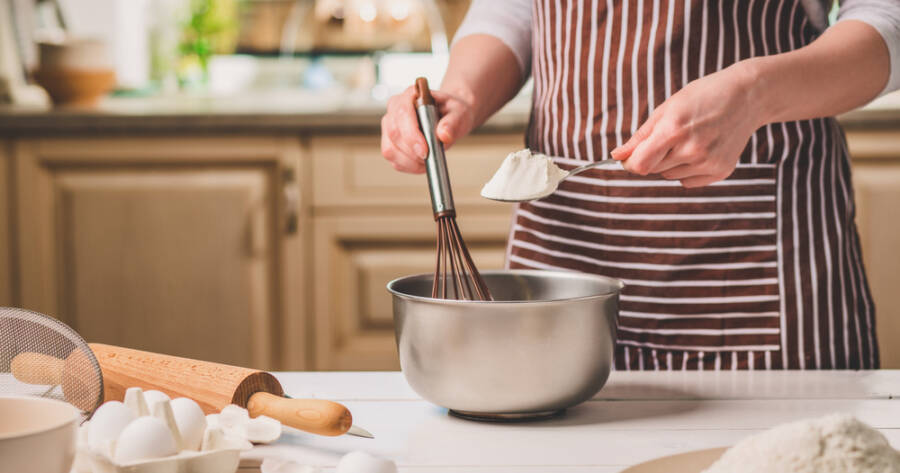Every cook knows the frustration of being halfway through a recipe only to realize an ingredient is missing. But kitchen creativity often leads to the best discoveries. With a little know-how, you can swap smartly and still achieve great flavor, texture, and balance. Substitutions don’t just save time—they also help build confidence in cooking. Once you learn how ingredients work together, improvising becomes second nature, turning kitchen slip-ups into delicious success stories.
Milk, Cream, and Dairy Alternatives
Running out of milk or cream doesn’t have to derail your recipe. For baking or cooking, mix one tablespoon of melted butter with a cup of water to replace whole milk’s richness. Evaporated milk can substitute for heavy cream in soups or sauces, and plain yogurt works beautifully in baking or marinades when thinned slightly with water.
If you’re dairy-free, almond, oat, or soy milk can replace cow’s milk in nearly all recipes. Coconut milk adds creaminess and a subtle sweetness—perfect for curries or desserts. The key is matching texture: thicker liquids for creamy dishes, lighter options for drinks or batters. Once you learn each swap’s flavor profile, substitutions become a chance to personalize your cooking.
Eggs and Binding Replacements
Eggs provide structure, moisture, and lift, but there are easy alternatives when you’re out—or cooking vegan. One tablespoon of ground flaxseed mixed with 3 tablespoons of water makes a “flax egg” that mimics texture well in muffins or pancakes. Applesauce, mashed banana, or even plain yogurt can also replace eggs in baking, adding moisture and mild sweetness.
For savory dishes, try silken tofu or chickpea flour to bind burgers or fritters. Aquafaba—the liquid from canned chickpeas—whips up like egg whites for meringues or mousse. Understanding how eggs function in a recipe (binding, leavening, or enriching) helps you choose the right substitute and maintain the desired outcome.
Flour and Baking Fixes
Out of flour? Don’t panic—there are plenty of pantry stand-ins. Oats can be ground into oat flour using a blender, creating a wholesome substitute for all-purpose flour in cookies or pancakes. Almond flour adds rich flavor and moisture, while whole-wheat flour brings density and a nutty taste. If you’re short on self-rising flour, add 1½ teaspoons of baking powder and ¼ teaspoon of salt per cup of regular flour.
Cornstarch, tapioca starch, or arrowroot powder can replace flour as thickeners in sauces or gravies. Use half the amount since these are more potent. For gluten-free baking, blends combining rice, potato, and tapioca flours offer structure without sacrificing texture. Knowing your flour substitutes ensures that even unexpected shortages don’t interrupt your baking plans.
Sugar, Sweeteners, and Flavor Swaps
Sweeteners are some of the easiest ingredients to adjust creatively. Honey, maple syrup, or agave nectar can replace granulated sugar—use about ¾ cup for every cup of sugar and reduce other liquids slightly to maintain balance. Brown sugar can be recreated by mixing white sugar with a tablespoon of molasses per cup.
For healthier swaps, try coconut sugar or date paste, which provide natural sweetness with added nutrients. In baking, unsweetened applesauce can replace part of the sugar to reduce calories while keeping moisture. The right sugar substitute depends on what you’re making: syrups work best in sauces, while granulated options excel in baking. Taste and texture guide the best match.
Oil, Butter, and Fats
Fats provide moisture, flavor, and tenderness—but even if you’re out, you can adapt easily. In baking, unsweetened applesauce or mashed avocado replaces butter at a 1:1 ratio for a lighter, moist texture. Coconut oil or olive oil can substitute for vegetable oil in most recipes, adding richness and subtle depth.
In savory dishes, use broth or a splash of wine instead of oil to sauté vegetables for a lower-fat approach. If a recipe calls for melted butter, try neutral oils like canola or grapeseed for similar consistency. Each fat adds its own personality—experimenting helps you find what fits your taste and cooking style while keeping your dishes balanced and satisfying.
Confidence in Every Substitution
Cooking with substitutions teaches flexibility—the hallmark of a skilled home cook. When you understand the purpose behind each ingredient, you can swap with confidence instead of hesitation. These moments turn recipes into learning experiences, helping you discover new flavors and techniques. Whether it’s replacing milk, eggs, sugar, or oil, creativity transforms inconvenience into opportunity. With a bit of curiosity and resourcefulness, you’ll never feel stuck mid-recipe again—just ready to improvise like a pro.

